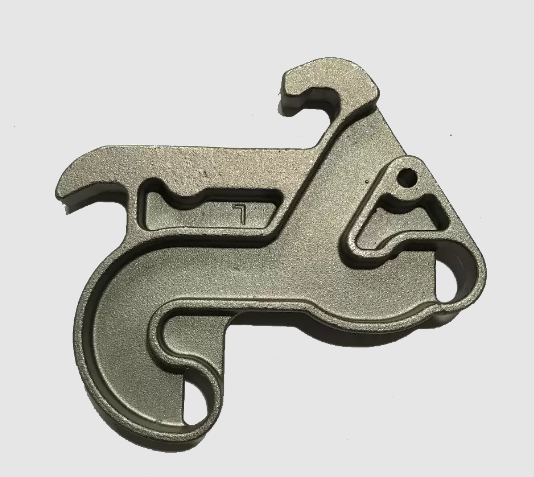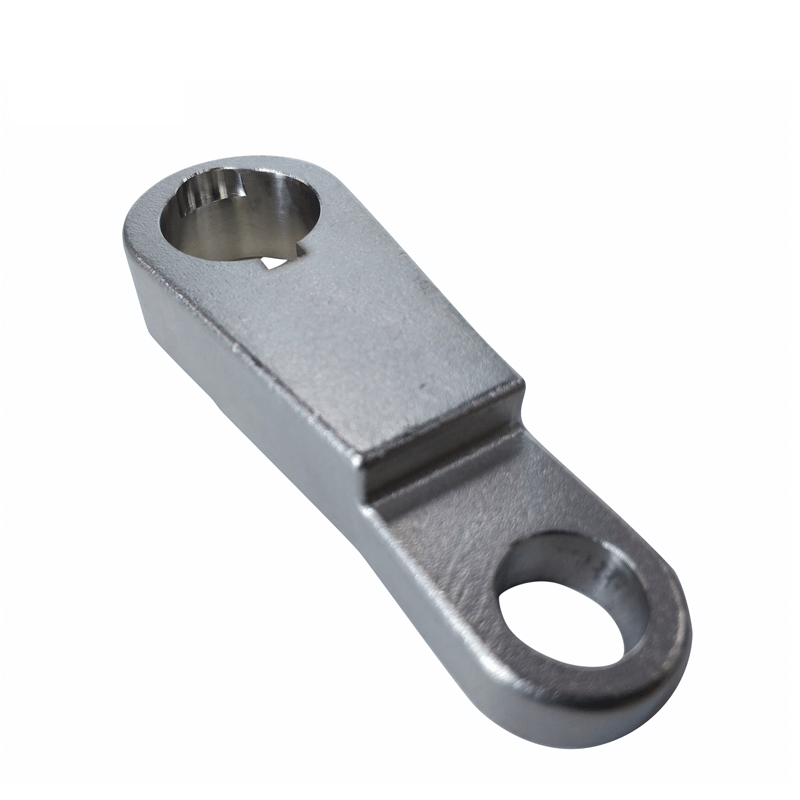Investment Casting for OEM Agricultural Machinery Components: Benefits and Process Overview
Investment casting is a popular manufacturing process used in the production of agricultural machinery components. It is a precision casting process that produces complex parts with high accuracy and consistency. Investment casting is particularly suitable for producing parts with intricate shapes, thin walls, and fine details that would be difficult or impossible to achieve with other casting methods.
OEM agricultural machinery components made using investment casting are widely used in the agricultural industry. These components include parts for tractors, combines, balers, planters, spreaders, plows, tillage equipment, and other farm machinery. Investment casting is a cost-effective method of producing these components in large quantities while maintaining high quality and consistency. The process involves pouring molten metal into a ceramic mold, which is then broken away after the metal has cooled and solidified. This results in a finished part with a high degree of accuracy and detail.
Investment casting offers several advantages over other casting methods. It allows for the production of complex parts with tight tolerances and excellent surface finishes. It also enables the use of a wide range of materials, including ferrous and non-ferrous alloys, which can be tailored to specific applications. Additionally, investment casting is a versatile process that can be used to produce parts in a wide range of sizes and shapes, from small, intricate components to large, heavy-duty parts.
Investment Casting in OEM Agricultural Machinery Components
Investment casting is a manufacturing process that is commonly used in the production of OEM agricultural machinery components. This process involves the use of a wax pattern that is coated with a ceramic shell. Once the ceramic shell is dry, the wax is melted out, and the resulting cavity is filled with molten metal. Once the metal has cooled and solidified, the ceramic shell is removed, and the finished part is ready for use.
One of the primary advantages of investment casting in the production of OEM agricultural machinery components is that it allows for the creation of complex shapes with a high degree of accuracy. This is because the ceramic shell can be molded to match the exact shape of the wax pattern, resulting in a final product that is an exact replica of the original pattern.
Another advantage of investment casting is that it allows for the use of a wide variety of materials, including steel, stainless steel, ductile iron, beryllium copper, nickel-based alloys, aluminum, cobalt-based alloys, and copper-based alloys. This versatility in materials allows for the creation of OEM agricultural machinery components that are durable and long-lasting, even in harsh environments.
In addition to its accuracy and versatility, investment casting also offers a high level of repeatability, which is essential in the production of OEM agricultural machinery components. This means that parts can be produced consistently and reliably, ensuring that each component meets the same high standards of quality and performance.
Overall, investment casting is a valuable tool in the production of OEM agricultural machinery components. Its accuracy, versatility, and repeatability make it an ideal choice for creating complex, durable parts that can withstand the demands of the agricultural industry.

Advantages of Investment Casting in OEM Agricultural Machinery Components
Investment casting is a popular manufacturing process that offers numerous advantages in the production of OEM agricultural machinery components. Here are some of the key benefits of using investment casting for OEM agricultural machinery components:
- Tight Tolerances: Investment casting enables the production of complex, high-precision parts with tight tolerances. This is particularly important for agricultural machinery components that require a high degree of accuracy and consistency to function correctly.
- Design Flexibility: Investment casting allows for greater design flexibility compared to other manufacturing techniques. This means that OEMs can create more complex and intricate parts that are customized to their specific needs.
- Reduced Machining Costs: Investment casting can significantly reduce the need for secondary machining, which can save OEMs time and money in the production process.
- Wide Range of Materials: Investment casting can be used to produce components from a wide range of materials, including aluminum, cobalt-based alloys, and copper-based alloys. This flexibility allows OEMs to choose the material that best suits their needs in terms of strength, durability, and corrosion resistance.
- Improved Surface Finish: Investment casting produces parts with a smooth surface finish that requires little to no additional finishing. This is particularly important for agricultural machinery components that need to be free from burrs, rough edges, and other imperfections that can impact their performance.
Overall, investment casting offers numerous advantages for OEM agricultural machinery components, including tight tolerances, design flexibility, reduced machining costs, a wide range of materials, and improved surface finish. These benefits make investment casting an attractive option for OEMs looking to produce high-quality, customized components for their agricultural machinery.
Factors to Consider in Investment Casting for OEM Agricultural Machinery Components
Investment casting is a commonly used technique for producing OEM agricultural machinery components. It offers several advantages, including high accuracy, excellent surface finish, and the ability to produce complex shapes with ease. However, there are several factors that manufacturers must consider when using investment casting for agricultural machinery components.
Material Selection
The selection of material is an essential factor in investment casting. Agricultural machinery components are often subjected to harsh environments, including exposure to chemicals, dirt, and moisture. Therefore, it is crucial to select materials that can withstand these conditions. Common materials used in investment casting for agricultural machinery components include stainless steel, carbon steel, and aluminum.
Design Complexity
The design complexity of the component is another critical factor to consider in investment casting. The more complex the design, the more challenging it is to produce an accurate and high-quality component. Therefore, manufacturers must carefully consider the design and ensure that it is feasible for investment casting.
Production Volume
The production volume is another important factor to consider in investment casting. Investment casting is ideal for producing low to medium volume parts. For high-volume production, other manufacturing methods such as die casting or stamping may be more suitable.
Surface Finish
The surface finish of the component is an essential consideration in investment casting. Agricultural machinery components often require a high-quality surface finish to prevent corrosion and improve durability. Therefore, manufacturers must ensure that the investment casting process produces a smooth and uniform surface finish.
Cost
The cost of investment casting is a crucial factor to consider for OEM agricultural machinery components. The cost of investment casting is influenced by several factors, including material selection, design complexity, and production volume. Manufacturers must carefully balance the cost of investment casting with the benefits it offers.
Investment casting is an excellent manufacturing method for producing OEM agricultural machinery components. However, manufacturers must carefully consider several factors, including material selection, design complexity, production volume, surface finish, and cost, to ensure that the investment casting process produces high-quality components at a reasonable cost.

Materials Used in Investment Casting for OEM Agricultural Machinery Components
Investment casting is a widely used process in the manufacturing of OEM agricultural machinery components. The process involves creating a wax pattern of the desired part, which is then coated with ceramic material. The ceramic shell is then heated, causing the wax pattern to melt and flow out, leaving behind a cavity in the shape of the desired part. Molten metal is then poured into the cavity, and once it cools and solidifies, the ceramic shell is broken away to reveal the finished part.
The materials used in investment casting for OEM agricultural machinery components include steel, stainless steel, ductile iron, gray iron, beryllium copper, nickel-based alloys, aluminum, cobalt-based alloys, and copper-based alloys. The choice of material depends on the specific application and the required properties of the finished part.
Steel is a popular choice for OEM agricultural machinery components due to its strength, durability, and resistance to wear and corrosion. Stainless steel is also commonly used for its corrosion resistance and high strength-to-weight ratio.
Ductile iron is often used for parts that require high strength and toughness, such as gears and shafts. Gray iron, on the other hand, is used for components that require good machinability and damping properties, such as engine blocks and brake rotors.
Beryllium copper is used for parts that require high strength, conductivity, and corrosion resistance, such as electrical connectors and switch components. Nickel-based alloys are used for parts that require high temperature resistance, such as turbine blades and exhaust components.
Aluminum is used for parts that require low weight and high strength, such as engine blocks and transmission cases. Cobalt-based alloys are used for parts that require high temperature and wear resistance, such as cutting tools and turbine blades. Copper-based alloys are used for parts that require high strength and conductivity, such as electrical contacts and springs.
In conclusion, investment casting is a versatile process that allows for the production of OEM agricultural machinery components in a wide range of materials with varying properties. The choice of material depends on the specific application and the required properties of the finished part.
Process of Investment Casting for OEM Agricultural Machinery Components
Investment casting is a manufacturing process that involves the production of complex and intricate components with high dimensional accuracy. The process is widely used in the production of OEM agricultural machinery components due to its ability to produce parts with excellent surface finish, tight tolerances, and complex geometries.
The investment casting process for OEM agricultural machinery components typically involves the following steps:
- Pattern creation: A pattern is created using a wax or plastic material, which is an exact replica of the final component. The pattern is designed with allowances for shrinkage and machining.
- Mold creation: The pattern is then coated with a ceramic material to create a mold. The mold is then heated to remove the wax or plastic material, leaving behind a cavity that is an exact replica of the pattern.
- Pouring: The mold is then filled with molten metal, which is allowed to solidify and cool.
- Finishing: The final component is removed from the mold and subjected to various finishing processes, such as trimming, grinding, and polishing, to achieve the desired surface finish and dimensional accuracy.
Investment casting is a highly versatile process that can produce OEM agricultural machinery components in a wide range of materials, including stainless steel, aluminum, copper, and cobalt-based alloys. The process is particularly well-suited for the production of small to medium-sized components with complex geometries and intricate details.
In addition to its high dimensional accuracy and excellent surface finish, investment casting also offers other benefits for the production of OEM agricultural machinery components. These include:
- Lower material waste compared to other manufacturing processes
- Ability to produce parts with thin walls and intricate details
- Ability to produce parts with a wide range of shapes and sizes
- High repeatability and consistency in part quality
Overall, investment casting is a highly effective process for the production of OEM agricultural machinery components, offering excellent dimensional accuracy, surface finish, and versatility in material selection.
Quality Control in Investment Casting for OEM Agricultural Machinery Components
Investment casting is a manufacturing process that involves producing high-precision components by pouring molten metal into a mold. OEM agricultural machinery components made using investment casting require rigorous quality control measures to ensure that they meet the required standards and specifications.
The quality control process in investment casting for OEM agricultural machinery components typically involves several stages. The first stage involves inspecting the wax patterns used to create the molds. The wax patterns are inspected for any defects, such as cracks, warping, or incomplete sections. Any defects found are corrected before the molds are made.
The next stage involves inspecting the molds themselves. The molds are inspected for any defects, such as cracks, voids, or misalignment. Any defects found are corrected before the molds are used to create the components.
Once the components are cast, they are inspected for any defects. The inspection process may involve visual inspection, ultrasonic testing, X-ray testing, or other non-destructive testing methods. The components are inspected for any defects, such as cracks, porosity, or incomplete sections. Any defects found are corrected before the components are finished.
In addition to these stages, the quality control process for OEM agricultural machinery components made using investment casting may also involve testing the mechanical properties of the components. This may involve testing the components for hardness, tensile strength, or other mechanical properties.
Overall, the quality control process in investment casting for OEM agricultural machinery components is a critical aspect of ensuring that the components meet the required standards and specifications. By implementing rigorous quality control measures at each stage of the process, manufacturers can produce high-quality components that are reliable, durable, and efficient.
Cost Analysis of Investment Casting for OEM Agricultural Machinery Components
Investment casting is a manufacturing process that is widely used in the production of OEM agricultural machinery components. It is a process that involves creating a wax pattern, which is then coated with a ceramic material to create a mold. The wax is then melted out of the mold, and molten metal is poured into the cavity to create the final component. This process is known for its ability to produce complex shapes with high precision and accuracy.
One of the key advantages of investment casting is its cost-effectiveness. While the upfront cost of creating the wax pattern and ceramic mold can be relatively high, the process becomes more cost-effective as the volume of components produced increases. This is because the cost of each individual component decreases as the fixed costs associated with creating the mold are spread out over a larger number of components.
Another factor that contributes to the cost-effectiveness of investment casting for OEM agricultural machinery components is the ability to produce components with a high level of precision and accuracy. This reduces the need for additional machining and finishing operations, which can add to the overall cost of production.
In addition, investment casting allows for the use of a wide range of materials, including stainless steel, carbon steel, and aluminum. This flexibility in material selection can help to further reduce the overall cost of production, as different materials may be more cost-effective for different components.
Overall, investment casting is a cost-effective manufacturing process for OEM agricultural machinery components. While the upfront costs can be relatively high, the ability to produce complex shapes with high precision and accuracy, as well as the flexibility in material selection, make it a popular choice for manufacturers in the agricultural machinery industry.
